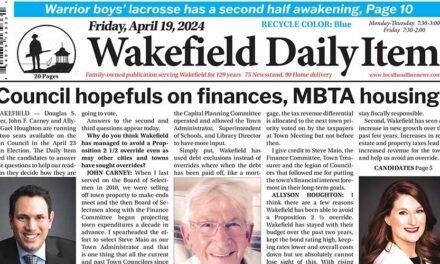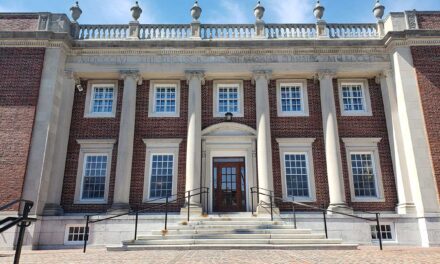By MARK SARDELLA
WAKEFIELD — Town Councilor Julie Smith-Galvin and Municipal Light Commissioner Jennifer Kallay appeared before the School Committee this week to report on Wakefield’s “Green Communities/Energy Reduction Plan.”
Kallay and Smith-Galvin explained that Green Communities is a grant program for Massachusetts municipalities that is focused on reducing energy use by municipal buildings and vehicles. The program is utilized by most towns and cities in the state to reduce energy costs and environmental impacts and improve town halls, libraries, schools, water and wastewater treatment plants, senior centers and fire and police buildings, among others.
Smith Galvin and Kallay outlined the benefits to the town of joining the Green Communities program, which include:
• An estimated $170,000 upon acceptance into the program.
• Awards of up to $200,000 annually, towards municipal energy conservation measures.
• Reduces energy costs for the Town and its residents.
• Enables reinvestment of cost savings in buildings and vehicles, thereby reducing future infrastructure investment and maintenance costs.
• Improves utilization of buildings.
• Improves health, safety, and environment.
The energy reduction commitment and plan involves an understanding of current energy use (a baseline) and a plan to reduce this use by 20 percent in five years
Smth-Galvin and Kallay outlined the proposed energy reduction plan. They maintained that Wakefield can reach its energy reduction goal by incorporating comprehensive energy improvements for five larger, less efficient buildings into its existing capital plan. They said that since schools are among the larger municipal buildings in town, they are key to reaching the energy reduction goals. Wakefield’s seven schools represent 75 percent of the Town’s building energy use.
Wakefield can reach 77 percent of its energy reduction goal by building a new, highly efficient high school, they said. Energy reductions at four other buildings are proposed for goal achievement. Those include Town Hall, the Americal Civic Center, the Public Safety Building and the Woodville School.
Smith Galvin and Kallay presented a graph showing energy use by each town-owned building as well as energy use by square foot in each building.
They also talked about recommended energy improvements at each town-owned building, including Town Hall, the Public Safety Building, the Americal Civic Center, the Woodville School, and the high school.
Green Communities grants provide funding to support the significant energy improvement opportunities, according to Kallay and Smith Galvin. In years 1-4 of the program, the total cost of the proposed energy improvements in town-owned buildings is estimated at $2,115,000, of which Green Communities grants would pay $770,000, leaving $1,345,000 to be funded by the town.
They said that the next steps include soliciting and incorporating feedback in early May, providing an updated Energy Reduction Plan for final review and approval in late May and applying to the Green Communities program in June.




